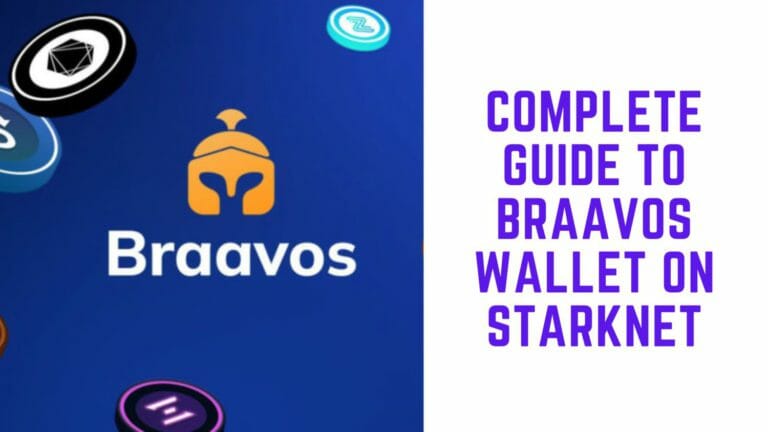Pacifica is a Solana-based perpetuals exchange that blends CEX-like speed with on-chain transparency. You trade from your wallet, using clear leverage limits, margin modes, and simple tools like stops, targets, and reduce-only exits. Beginners can start tiny, practice order controls, and scale gradually after understanding funding costs and liquidation behavior. In this article, we will explore the Pacifica Review.
Table of Contents
What is Pacifica?
- Pacifica is a Solana-native perpetual futures exchange that aims for CEX-like speed while keeping on-chain transparency. You trade from your own wallet, and the team emphasizes seamless UX plus AI-powered trading assistance to lower learning curves.
- It positions itself as a “next-gen hybrid exchange,” marrying fast execution with verifiable smart-contract logic.
- Markets run as perpetual swaps without expiries, using margin, mark price, and funding payments to keep prices near spot. Pacifica lists roughly twenty perp assets on mainnet, with leverage caps depending on each market’s volatility and liquidity profile.
- Cross and isolated margin are both available, letting you choose efficiency or strict risk segregation per position. Developers get full REST and WebSocket APIs for programmatic trading, streaming market data, and building bots or dashboards.

Features & Products
- Perpetual markets on Solana with 5×–50× leverage ranges, selected per asset and adjusted as conditions evolve. You can use cross-margin for shared collateral or isolated-margin to ring-fence individual trades while learning liquidation behavior safely.
- AI Trading Agent built directly into the app, offering explanations, quick analysis, and idea prompts beside the order ticket. It’s framed as guidance rather than advice, helping newcomers understand positions without leaving the trading interface.

- Advanced order controls feel familiar to CEX users, including market, limit, stop, take-profit, post-only, and reduce-only toggles. These tools support cleaner entries, exits, partial fills, and disciplined risk management during fast market conditions and news events.
- Robust liquidation framework with multiple tiers, designed to minimize disruption while covering losses. Clear docs explain triggers below maintenance margin, the staged process, and how risk is contained to protect users and overall market stability during volatility.
- Comprehensive API stack for strategies and automation, including deterministic signing, agent keys, and hardware-wallet support. These features let teams trade programmatically without exposing main wallet keys to infrastructure running bots or monitoring services.
- Transparent deposits and withdrawals with protective limits during closed beta, currently capping account equity and daily withdrawals for safety. Pages outline typical gas considerations and how pending states behave when thresholds are exceeded programmatically.
- Ongoing points program rewarding organic activity, distributing a fixed weekly amount to genuine traders using the GUI or API. Self-trading and sybil patterns are explicitly excluded, encouraging healthier order flow and better incentives alignment across users.
How to Get Started
- Verify official links and access the app, confirming you’re on the correct domain and the current access mode (closed beta or public). Avoid impostors by cross-checking docs and official posts each session.
- Connect a Solana wallet and fund USDC, keeping some SOL for network fees. Start with small deposits, practice placing and canceling orders, and review margin panels to learn liquidation math with trivial risk.
- Choose cross or isolated margin per trade, matching your risk tolerance and strategy. Conservative users often begin isolated, preventing one mistake from cascading across the rest of the account.
- Read the fee table and estimate funding, modeling expected costs over your intended holding period. Use limits and staged entries to control slippage; place stops and use reduce-only for clean exits under stress.
- If you build or automate, wire up testnet endpoints, implement deterministic signing, and simulate production usage. Promote to mainnet only after validating error handling, rate limits, and reconciliation for fills and cancellations.

Fees
- Tiered maker/taker fees use a 14-day rolling volume window, recalculated daily. Subaccounts inherit the master account’s tier, and their volumes aggregate—useful for teams splitting strategies while optimizing combined economics over continuous activity.
- Entry tier starts around 0.015% maker and 0.040% taker, stepping down at thresholds like five, ten, and twenty-five million dollars. Beginners should model expected fees alongside slippage and funding before sizing positions beyond small test trades.
- Funding payments are independent from trading fees, flowing between longs and shorts to keep perpetual prices near the index. Planning multi-day holds should include a funding budget, particularly when market skew remains one-sided across several sessions.
- APIs themselves are accessible without extra platform charges, though efficient streaming and fair usage are encouraged. Testnet endpoints mirror production, letting builders refine polling, throttling, and reconciliation before promotion to live trading.

- Occasional campaigns and points seasons can change effective costs, but terms evolve. Always check the live fee table and program notes in the docs or application before reorganizing strategies purely around anticipated discounts or tier shifts.
Security
- Self-custodial trading on Solana keeps keys with you, while protocol logic governs margin, funding, and settlement. This reduces centralized custody risk and provides verifiable rules for pricing and liquidations visible through documentation and status pages.
- Bug bounty program invites responsible disclosure, signaling an open stance toward hardening infrastructure. Security pages outline how researchers can report issues constructively, supporting continuous improvement and user protection as volumes grow.
- Deterministic JSON with Ed25519 signatures secures trading requests, clarifying exactly how to sign POST calls for the REST API. Following the reference workflow reduces integration mistakes that could otherwise jeopardize automated strategies or credentials.
- Hardware-wallet and Agent-Key support improve operational safety, enabling off-device signing and delegated API access without exposing your primary wallet’s private key to servers that run bots or analytic pipelines around the clock.
- Risk controls include multi-tiered liquidations and market-specific limits, helping prevent disorderly unwinds in thinner books. Clear margin terminology in the glossary supports beginners learning initial, maintenance, and liquidation concepts before leveraging size.
UI & UX
- CEX-style terminal with on-chain guardrails presents order book, ticket, positions, and health metrics in a familiar layout. New traders see liquidation distance, leverage, and funding clearly, supporting decisions before conditions deteriorate into forced exits.
- In-app Trading Agent reduces context switching, answering questions, explaining concepts, and summarizing positions alongside your ticket. The guidance is non-advisory, but it shortens the learning loop while you remain in full control of execution.
- Market list shows leverage per asset with margin modes, helping you choose isolated for strict containment or cross for capital efficiency. This pre-trade clarity is particularly helpful when experimenting with unfamiliar or more volatile markets.
- Public app and landing pages highlight beta status and links, letting you verify the correct domain each session. This habit helps avoid impostors while closed-beta limits and safety gates scale gradually with usage.
Affiliate & Referrals (Points & Programs)
- The weekly points program distributes five-hundred-thousand points to users engaging in genuine trading via GUI or API. The rules explicitly exclude self-trading and sybil behavior, encouraging healthy order flow and discouraging manipulative patterns.
- Programs are tuned and updated over time, so creators, communities, and teams should verify current qualifications, windows, and any retroactive adjustments before planning campaigns or publishing referral content tied to distributions.
- Public updates announce seasons, changes, and access, making it easier to time education threads, dashboards, or walkthroughs when new features or markets roll out to broader audiences beyond the earliest beta users.

Customer Support
- Start with the Docs hub for quick answers on trading overview, margins, leverage, and APIs. It’s the fastest route to resolve routine questions before opening a ticket during busy market conditions or release windows.
- Follow official links from the landing page when accessing the app, docs, and community channels. Verifying domains each session reduces phishing risks and ensures you see the newest notices about limits and features.
- API builders should include reproducible examples when requesting help, attaching request parameters, signatures, timestamps, and responses. Testnet endpoints make safe reproduction easy and speed engineering triage significantly.
- Status and docs announcements guide live operations, including deposit and withdrawal safety rails during closed beta. Checking these before large moves avoids avoidable friction around temporary caps and pending states.

Mobile App
- Trade from anywhere
Pacifica’s mobile app is built for quick, intuitive perp trading on the go. The interface mirrors desktop essentials—markets, order ticket, positions, and risk—so you can act fast without sacrificing clarity. - Download the app
- Open the App Store (iOS) or Google Play (Android).
- Search “Pacifica DEX.”
- Download the official app and open it.
- Connect your mobile wallet
- Tap Connect Wallet in the app.
- Choose Phantom, Solflare, or any WalletConnect-compatible wallet.
- Approve the connection inside your wallet app.
- Pick market & order type
- Select a pair (e.g., BTC-USD).
- Choose Market, Limit, or Conditional.
- Set size and leverage to match your plan.
- Confirm and execute
- Review price, size, leverage, and fees.
- Submit the order in Pacifica.
- Confirm the transaction in your wallet.
- Track and manage positions
View open positions, PnL, margin health, and funding. Edit or close orders, add stops/targets, and switch markets—all within the app.
Tips for smooth mobile trading: keep a small SOL balance for fees, enable biometrics + passcode on your wallet, start with small size while you learn, and double-check you’re using the official app listing before connecting.
Conclusion
Pacifica offers self-custody trading with a familiar interface and disciplined risk tools. Start tiny, journal results, and add protective stops before scaling size; funding costs often dominate multi-day holds. Builders should rehearse on testnet and validate signing, throttling, and reconciliation. The rolling fee model and points program reward consistent, organic activity while discouraging manipulative behaviors. Still, funding can dominate costs on multi-day holds, so plan entries, exits, and rotation timing rather than relying solely on headline trading fees. Good habits—plus conservative sizing—go further than any single feature when navigating leveraged markets responsibly.
Does Pacifica have an airdrop tied to points?
How are API requests authenticated securely?
POST requests use deterministic JSON formatting with Ed25519 signatures. The signing guide and SDK examples reduce mistakes and clarify how to construct verifiable requests for trading endpoints.
Are there protective limits on deposits and withdrawals?
During closed beta, there are caps on equity and daily withdrawals per account for security. The deposits and withdrawals page details current thresholds and pending behaviors precisely.








